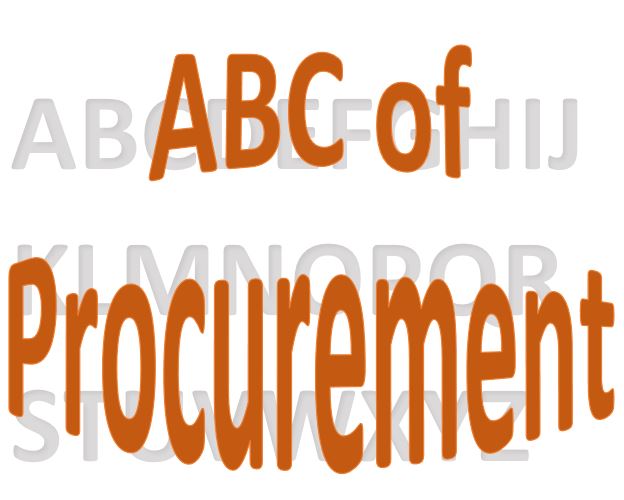In procurement we use a lot of three-letter acronyms and this resulted in a jargon that is sometimes confusing. So, what are RFQ, LPO, LPR, SLA, SRM, preferred suppliers, reverse auctions, e-tenders …?
.
This is a short list of the most commonly used 3-letter abbreviations and a couple of terms that are very often used in procurement.
CAPEX
Capital expenditure. Companies have their own definition of CAPEX, but the core idea is that this is spent on a piece of equipment that will be used in more than one production cycle, usually longer than a year at minimum. Also, it needs to cost above a certain limit, usually $1000. CAPEX is budgeted annually, requires a bit complicated acquisition procedure and the cost of purchase gets split across multiple years.
OPEX
Operating expenses. These are expenses required for the day-to-day operations of the company.
Direct spend
All materials that go into the finished product (or service) of the company. If it is not there, no output for the company.
Indirect spend
Well, all other products and services that are needed for the company to operate, but are not ending up in the final product (service). This would be cleaning, security, maintenance, IT, etc.
RFI
Request for information. Usually, the buyer does not look for pricing, but the general information about a product he is looking to procure.
RFQ/RFP
Request for quote/proposal. It is used interchangeably and is an official request to the supplier to offer his product. It should include price, delivery and payment terms at the minimum. I would suggest using the term RFQ when you are primarily looking for the price. RFQ would look as well for other details like transport, installation, training, maintenance etc.
TCO
The total cost of ownership. Especially for CAPEX, besides the cost of the item itself, there are costs of running, maintenance, spare parts and eventually disposal/sell-off. This all together represents the TCO that the buyer needs to find out and present to the stakeholder.
LPO/PO
Local purchase order/Purchase order. An official and legally binding order. Once issued and accepted by the supplier, it is a basic contract between supplier and buyer.
T&C’s
Terms and Conditions. The small print, stating all details of the delivery, payment, warranty, return etc. If the value of the contract is high, this is where you will spend a lot of time.
BATNA
The best alternative to a negotiated Agreement. The manager will sooner or later ask “What is your BATNA”. Simply said, this is the point where you can not proceed with the negotiation. So, either the highest acceptable price or longest delivery time, etc.
LPR/PR
Local purchase request / Purchase request. It has many variations, but this is an internal document where stakeholders request something to be procured by the purchasing department.
BOM
Bill of materials. Very often in use in manufacturing companies. The BOM has in it all material needed for the production or project. For longer projects, it will be accompanied by a delivery schedule. The BOM tells you what to buy, the schedule when it is needed. Good luck with getting both sorted out.
DO
Delivery order. The paper where someone from our company confirmed that the goods were received in the quantity stated and in good condition. Procurement looks for DO either to authorize payments or to file a complaint if wrong or damaged goods have been delivered.
SKU
Stock keeping unit. For every SKU, the stores have one item code in the system or one bin card. The SKU represents one item, uniquely different from all other SKU’s. For example, the following 3 items are three separate SKU’s: Coffee pouch 100 gr, Coffee glass jar 100gr, coffee glass jar 250 gr.
Goods provider
This is a supplier of goods
Services provider
This is a company that does any kind of service to the company: Cleaning, security, maintenance, training, transport. If no physical good is delivered, it is a services provider.
SLA
The service level agreement is usually a lengthy document that shall ideally define how a service provider shall do his job. What do we expect as a result of the service, how we measure if the service has been properly delivered and timelines. Purchasing teams usually get this document from the stakeholder but should understand the main points.
SRM
Supplier relationship management. In large companies, there is software for this. In smaller companies, it is an Excel file containing at least: Contact details, goods and services the supplier provides, comments on quality and delivery, sometimes financial data (depending who is managing the payables).
Those are only the basic ones, that you will come across in the first days of work in the procurement team. For more abbreviations, visit the pages below.
Glossary of Procurement Terms
51 Terms Every Procurement Professional Should Know
The Procurement Acronyms and Abbreviations That You Need to Know
Glossary of Commonly Used Procurement Terms



